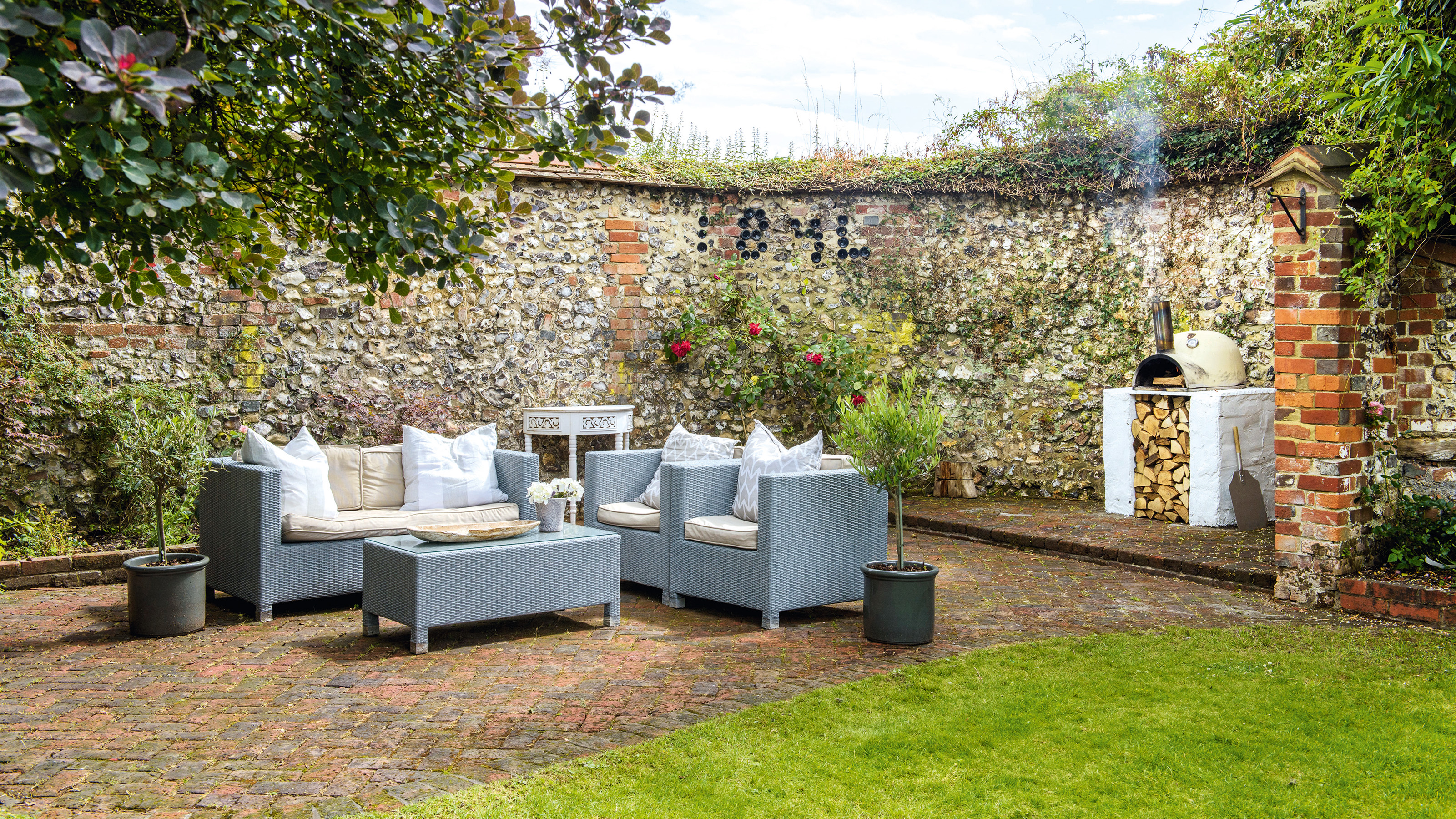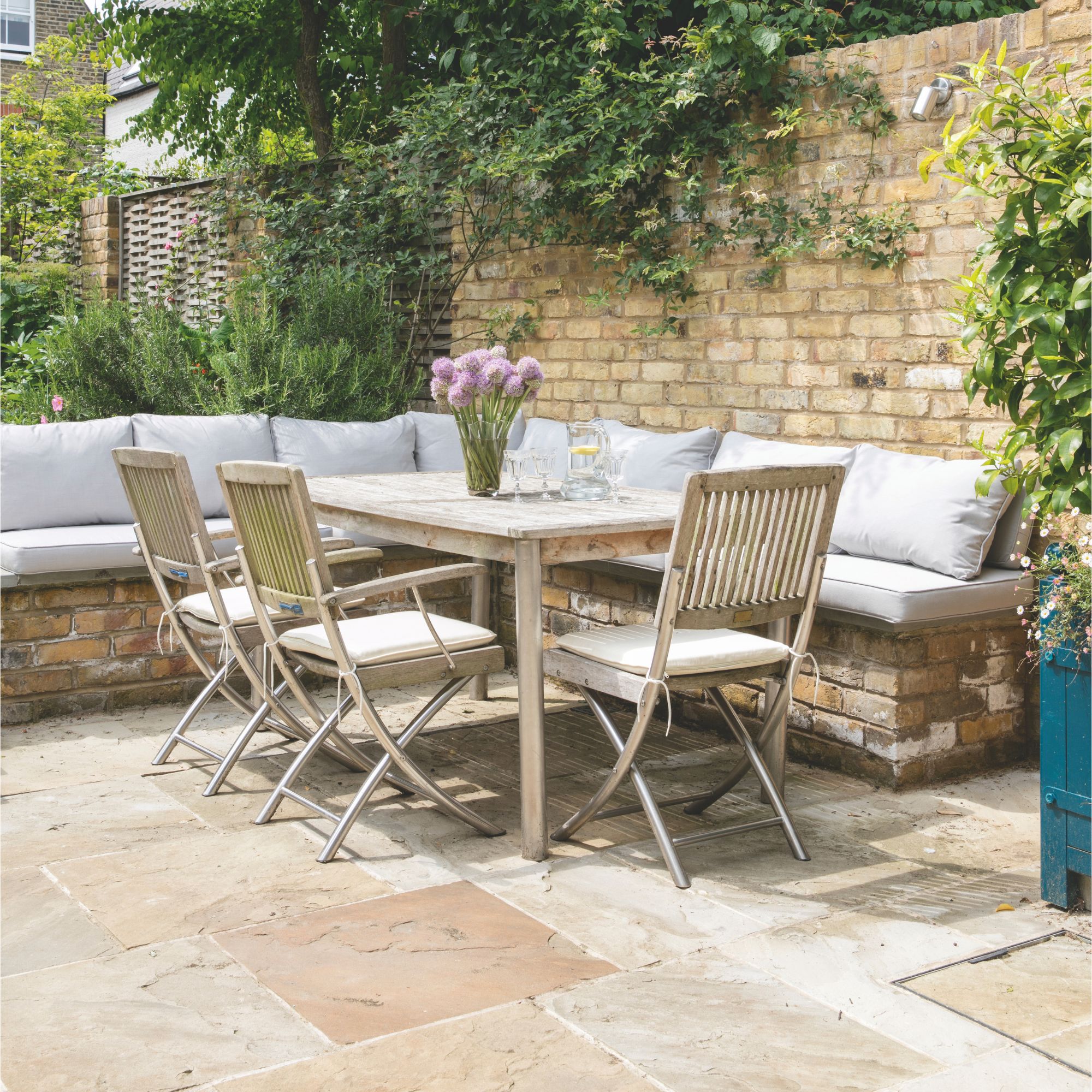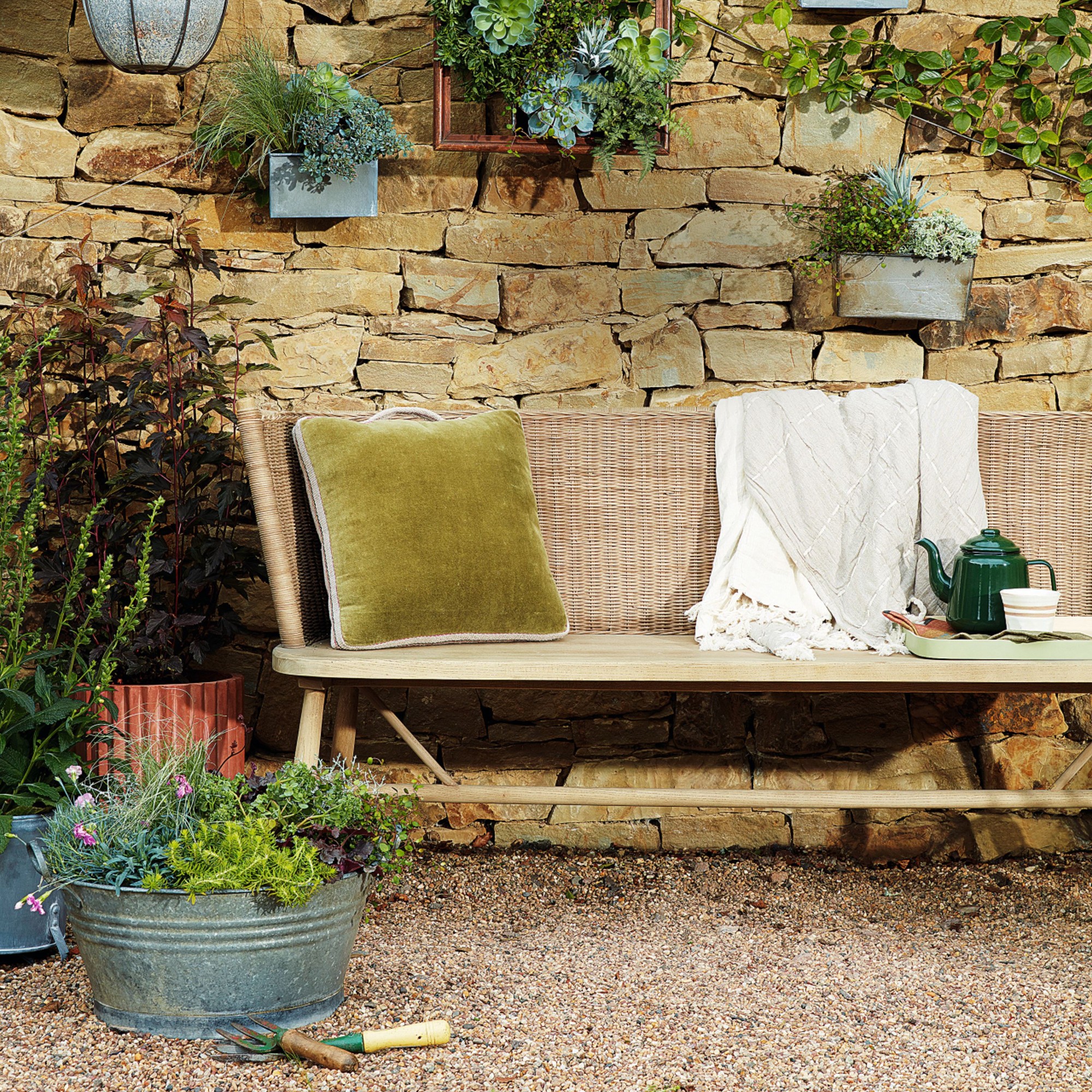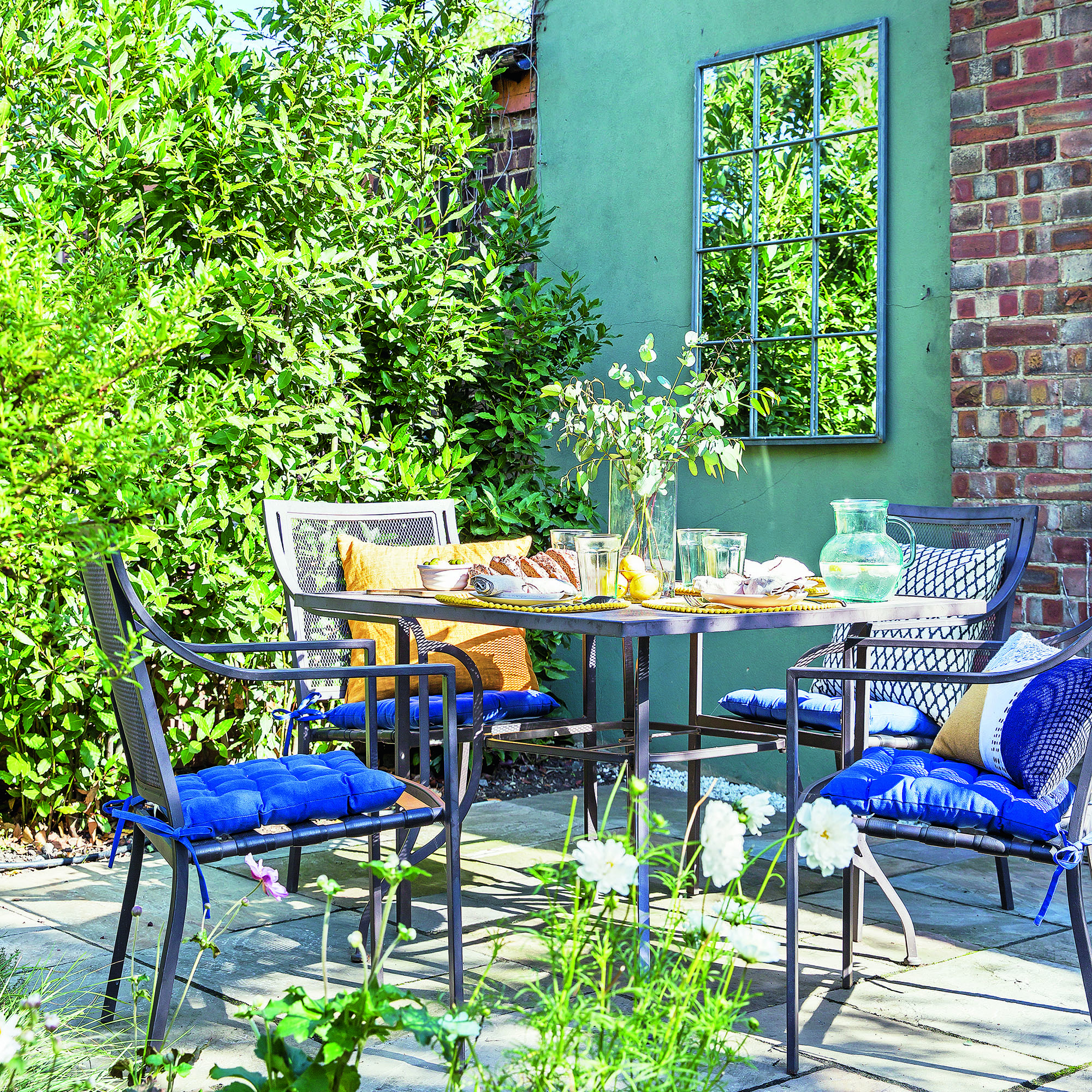5 things you should know before building a garden wall so you don't fall for any common mistakes
Whether installing new or looking to refresh an existing structure, understand the basic rules and building blocks of your garden walls


Whether restoring an existing wall or building new, these are the five things you should know before building a garden wall.
Building a garden wall is one of the essential garden landscaping ideas. When done well, it can really elevate the look of your garden or up your home's kerb appeal. However, many common mistakes can trip you up.
Far from just defining the boundaries of your property, garden walls and your outdoor wall decor ideas play an essential role in garden privacy and home security as well as curating the backdrop of your plot. To help you find the right fit for your space, the experts share their top tips from deciding on materials and budgeting to understanding the rules and regulations.
1. Understand the different styles of wall
There are several different types of garden wall, including all-encompassing full-height designs that enclose a courtyard garden, retaining walls that help to keep the soil in place in beds and borders, and smaller structures that demarcate areas or create a split-level garden.

Traditional walls are made from brick or stone, although concrete or corten steel are increasingly popular alternatives. Gabion walls (wire cages – like these from B&Q – filled with rocks) create a more industrial look and are best suited to retaining walls, as they can feel very imposing when used at full height without the addition of climbing plants.
When choosing materials, look to the style of your house and garden – you can either mimic the materials seen in the property and your local landscape or go bold with a contrast.
2. Establish your budget before starting work

Budget will be a significant factor in your choice of wall material. Joe Ragdale, technical director at Wetherby Building Systems breaks down the options and their typical costs:
Sign up to our newsletter for style inspiration, real homes, project and garden advice and shopping know-how
- Brick walls cost from £50 – £150 per metre
- Stone walls cost from £200 – £350 per metre
- Concrete stone-look walls cost from £70 – £100 per metre
- Gabion walls cost £150 – £200 per metre
- Corten steel walls cost £200 – £400 per metre
As a general rule, retaining walls will be cheaper to build than full-height walls as they are shorter in stature, so they take less time and require fewer supplies. However, the cost is also influenced by the material and length of the wall. Labour costs also need factoring in – retaining walls are best built by professionals
as they need to keep the soil safely in place.
Labour costs range from £150 to £300 per day. A skilled bricklayer can typically complete 1 to 2 metres of wall per day for a standard, uncomplicated design, says Joe Ragdale, technical director at Wetherby Building Systems.
To cut costs, consider restricting the height of a wall to between 1 and 1.5 metres, and topping it with a fence or a woven panel to reach the desired height. This design choice also adds another layer of interest to the wall and is a particularly good option for smaller gardens, where tall, solid walls can feel imposing.

3. Save money by digging your own footings
Even if you don’t intend to construct the wall yourself, you can save money by digging the footings. Trevor Knight from Marshalls shares his recommendations for the depth of footings depending on height and wall type:
- Single-skin walls (up to 1m): 300mm depth of concrete
- Double-skin walls (up to 1m): 150mm depth of concrete
- Double-skin walls (1–2m): 375-450mm depth of concrete
- Retaining walls (up to 1m): 150mm-300mm depth of concrete.
‘It’s also worth noting that ground conditions in the garden play a big role in determining the required footing depth,’ adds Trevor.
4. Consider repairing rather than replacing
If your current wall is looking worse for wear, then there are many ways to hide an ugly garden wall. First, ensure that it is structurally sound and repair where necessary.
‘Using lime mortar, to relay loose or missing coping stones and badly eroded brick or stonework within the wall, and repoint where necessary,’ says Roger Hunt. ‘Dry stone walls, which are built without any mortar or cement, should only ever be repaired by professional craftspeople.’

Also, remove any fast-growing climbing plants whose roots are growing into the mortar, as these will cause weakness in the brickwork. Once everything is secure, you can leave the wall as it is, fronted with a trellis and climbing plants.
Alternatively, consider rendering to disguise any unsightly brick wall. Similar to rendering a house, according to All Weather Coatings, rendering a garden wall costs approximately between £25 to £40 per square meter. Alternatively, try your hand at painting a garden wall.
‘Coping stones are a great addition to any brick or stone wall,’ says Trevor Knight at Marshalls. ‘Most are designed with a drip groove to direct water away from the wall’s surface and reduce the risk of erosion, frost damage, and long-term structural issues. They also give the wall a polished finish and can double as a seating area on lower walls.
5. Know the rules and regulations
In most cases, building a new garden wall will be classed as permitted development, as long as you abide by a few rules. If the wall is next to a road or path, it must be less than one metre tall, and less than two metres elsewhere – both measured from ground level. If existing walls are taller than these regulation heights, they cannot be increased.

There are tighter rules and regulations for listed buildings or those in conservation areas – in these cases planning permission or listed building consent will need to be sought.
‘Planning permission can cost between £200 and £500 depending on your local authority,’ notes Joe Ragdale, technical director at Wetherby Building Systems, so it’s important to factor this into your budgeting. Retaining walls in the grounds of a non-listed building do not need planning permission.
It’s important to abide by the Party Wall etc. Act 1996 to prevent disputes with neighbours. ‘If you’re planning to build or alter a wall on or near the boundary between your property and a neighbour’s, you’ll need to obtain their consent before proceeding with any work,’ says Joe.
A good landscape contractor can help, and planningportal.gov.uk has lots of useful advice.
FAQ
Do I need foundations for a garden wall?
For most garden walls you will need foundations to ensure that they are stable. One exception to this is gabion walls – which can sit above the ground as the weight of the rocks keeps them in place.
Can I build a wall myself?
Gabion walls are one of the easiest to install on a DIY basis, though require a lot of heavy lifting as you need to fill the cages with stones. Corten steel walls require similar installation to garden fencing and are particularly well suited for retaining walls. Simple brick and stone walls are also an achievable DIY Project.
‘Make sure you have the right tools and equipment, and look for products that are easier to install,’ advises Trevor Knight at Marshalls. ‘For example, our Croft Stone Walling products do not require any mortar, which removes the need for any bricklaying skills and means the wall can be easily built, added onto and rebuilt as necessary. Croft Stone Walling can also be built without a concrete footing – it just needs a firm-level base.’
Now you have all the information you need you can get start on planning that garden wall transformation.

Holly is one of Ideal Home’s content editors. Starting her career in 2018 as a feature writer and sub-editor for Period Living magazine, she has continued this role also adding regular features for Country Homes & Interiors and the Ideal Home website to her roster. Holly has a passion for traditional and country-inspired interiors – especially kitchen design – and is happiest when exploring the countryside and hills of the Lake District. A keen gardener, she is a strong believer that you can never have too many houseplants.